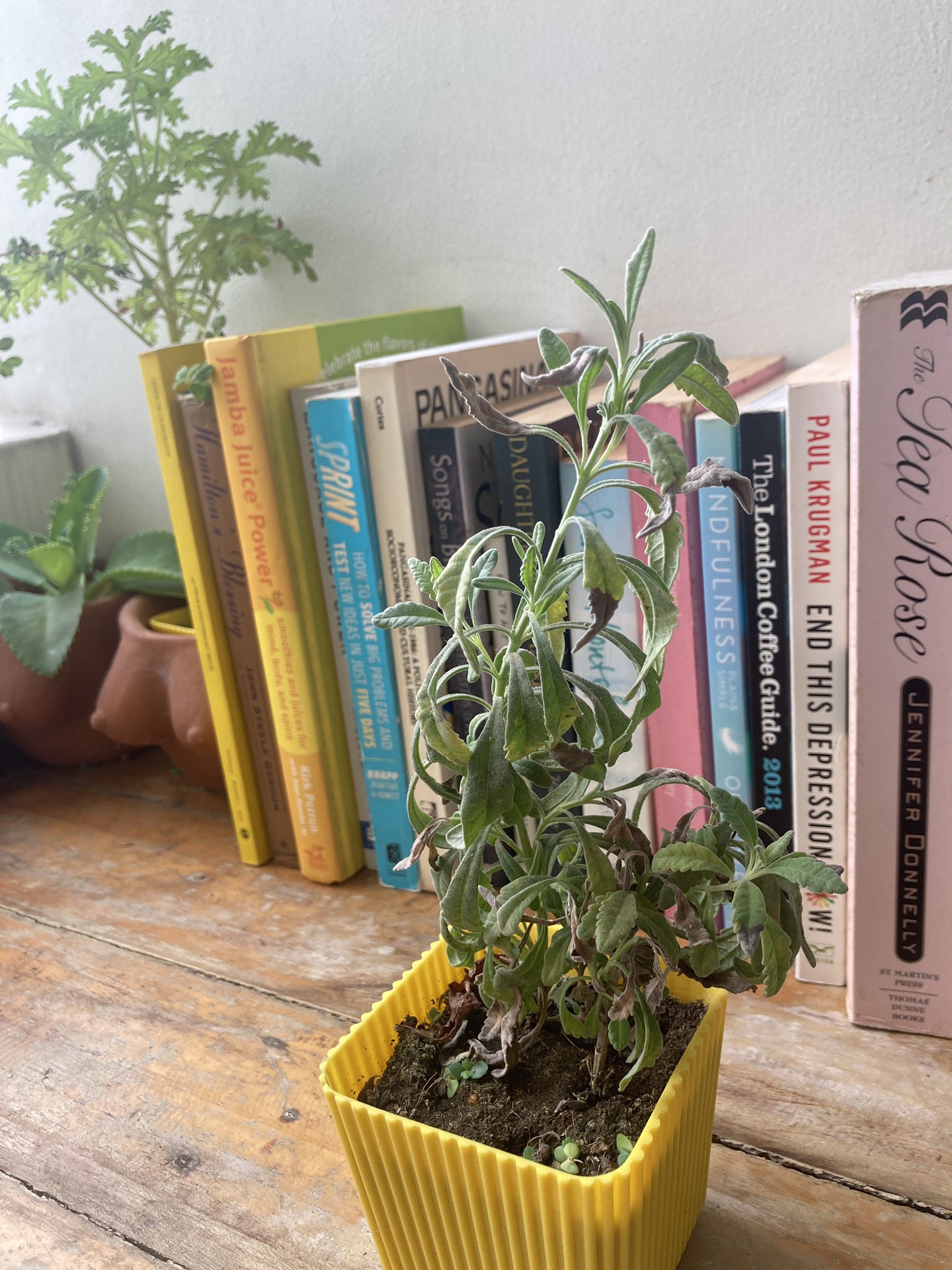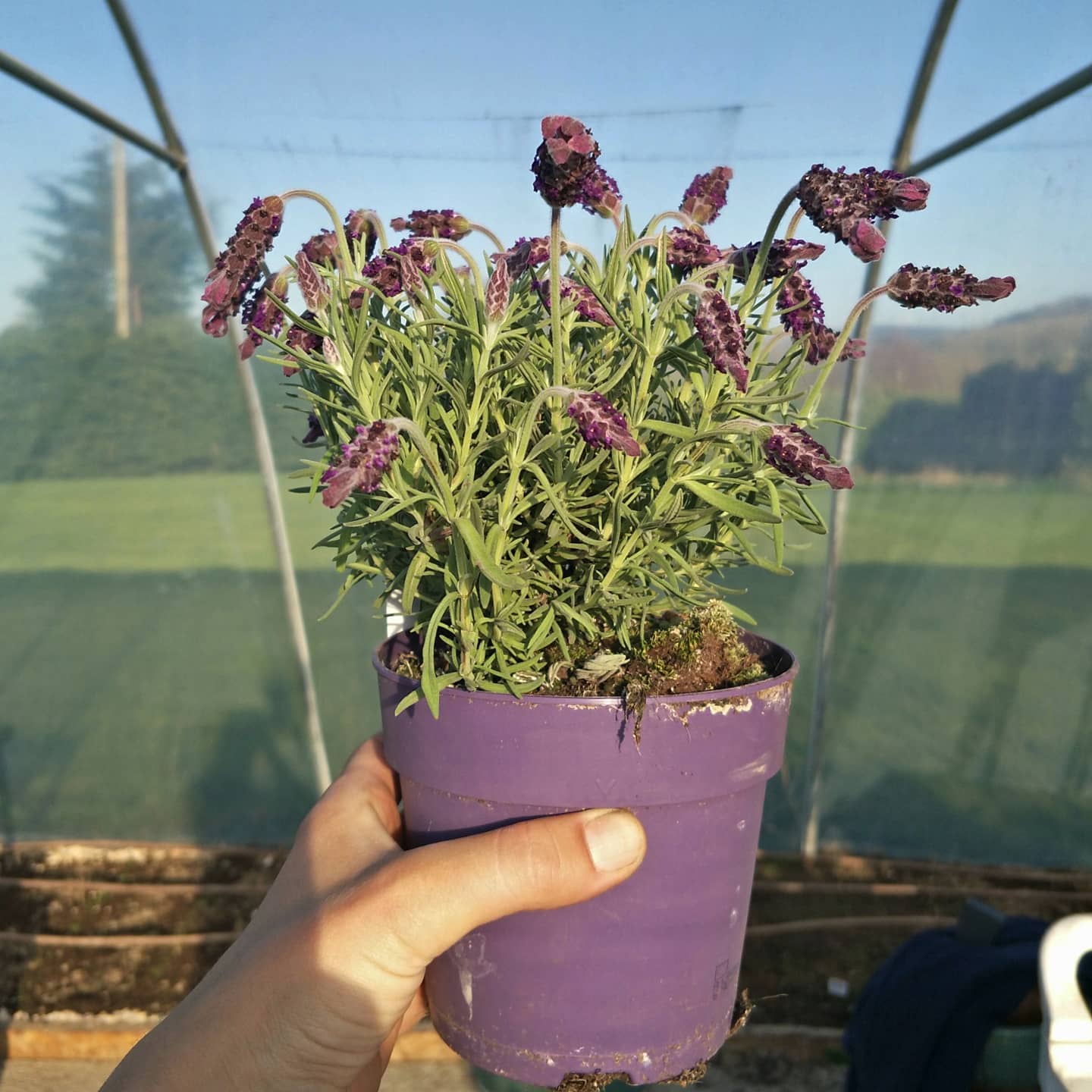If your Lavender plant does not reciprocate well to watering and proper sunlight and its leaves start turning black, yellow, and brown, chances are you are missing out on proper care.
Timely attention and care can help you get the Lavender plant growing to the fullest.
Table of Contents Show
Is It Normal For Lavender Leaves to Discolor? Can You Fix It?
Lavender (Lavandula angusifolia) is a perennial herb persisting for more than a year.
Generally, as a part of the natural life cycle, it is normal for the older leaves of Lavender to fade and change their color to yellow and brown before losing them.
It may be due to inappropriate growing conditions like over watering, under fertilization, low-light or high humidity.
Needless to worry, you can always fix the situation with a little care and alteration to its current growing situation.
5 Cause of the Lavender Leaves Turning Black, Yellow and Brown
To get your Lavender growing right in any situation, you must first identify its problem correctly.
So, here are some major causes for Lavender black, brown, and yellow leaves.
1. Improper Watering
Lavender is a drought-resistant plant, so one thing they fail to tolerate is excess moisture.
Regular overwatering in Lavender fills the pore space in the soil and causes poor aeration in the roots.

When the overwatering situation persists for a long time, the entire plant, including the Lavender leaves, changes black.
Likewise, leaving the plant unwatered for a longer period also affects the plant’s health, including the leaf color.
Dry yellow leaves, brown spots, and curling are the symptoms of Lavender dehydration.
How to Fix?
- To prevent yellowing of the young seedling, water them 1-2 times a week.
- For established Lavender, water them once or twice every week in the summer. You may alter the frequency depending on the environmental condition.
- Water the Lavender plant only when the top 2 inches of the soil is dry.
- Bottom water the potted Lavender allowing the plant to take in sufficient water.
- Do not forget to drain the excess water to avoid unwanted moisture in the moisture zone.
2. Imbalanced Fertilization
You’re certainly feeding your herb wrong if the plant does not keep up good health even after proper watering and care.
Besides, phosphorous deficiency causes Lavender leaves to appear scorched or burned-like brown to black spots. The Lavender leaf margin may turn yellow or brown and eventually grey to black.
Although Lavender is not a heavy feeder, a little does of Nitrogen rich fertilizer gives a push for Lavender blooms to unfurl.
But remember, sometimes you may just overwhelm the plant with extra fertilizer, bringing in the chemical burns and salt deposition.
The symptoms of chemical burns are wilted brown leaves in Lavender, blossom drop, and stunted growth. Also, more fertilizers make the plant susceptible to pest infestation.
How to Fix?
- For overfertilized Lavender, flush the excess out by placing the plant under running water for 4-5 times. Repeat the process 3-4 times to properly remove the chemical.
- Make sure not to overdo the fertilizer. use balance fertilizer only once in the spring, when the plant is set to flower.
- Apply the required dose of fertilizer only after you finish watering the plant. This helps better absorption of the fertilizer.
- Line the fertilizer 2-3 inches away from the base of the fertilizer to avoid chemical burns on the stem.
- Repot the Lavender in a fresh potting medium every 2 years.
3. High Humidity
Unlike the other cause, high humidity is an indirect contributor to the Lavender leaves back, brown and yellow.
This is because the rise in the humidity of the air around the plant makes the plant susceptible to fungal and pest attacks, which then contribute to black leaves.
Since Lavender is a plant that prefers low humidity and prefers a dry, well-ventilated growing environment, air moisture about 50% stress the plant.

How to Fix?
- Relocate the plant away from heat vents and coolers to avoid humidity fluctuation.
- You may mist the plant, but make sure not to leave water droplets on the leaves.
- It is better to invest in a dehumidifier to lower the humidity to 30-40%, preventing the increase.
- Keep the plant at a distance from its companion plants to evade high humidity.
- Use a moisture meter regularly to keep the humidity in check.
4. Inappropriate Sunlight
Both low light and extremely harsh sunlight do no good to the tropical and sometimes subtropical Lavender plant.
Lavender plants thrive in bright sunlight but require partial afternoon shade to protect the leaves from scorching sunlight.
Further, the plant appears droopy and dull.
Meanwhile, in low light conditions, Lavender cannot perform photosynthesis, which reduces the amount of chlorophyll. Following this, the leaves start fading and change into yellow color.
If the plant stays in the dark for a longer time, the stem and leaf will be etiolated. The growth is stunted, and you may have to lose the plant.
How to Fix?
- Bring your plant under the shade to avoid the incidence of direct sunlight.
- Provide 7-9 hours of bright direct sunlight to the plant.
- For indoor Lavender, place them 2-3 feet away from the north or south-facing window. This way, they can receive the mild morning and evening sunlight and escape the harsh mid-day ones.
- Use a sheer curtain if your window receives strong sunlight.
- In case of low light, move the plant to a brighter location. Then gradually bring them out on the patio.
- For zones with hot summers, like Zone 8 to Zone 10, ensure not to place the plant outside without shade.
5. Pest and Fungal Infestation
One of the main reasons for black Lavender leaves is due to fungal infections and pest diseases.
The affected leaves slowly fade their color and start turning yellow. And eventually, they lose their vigor.
Further, fungal pathogens causing botrytis blight or leaf spot also infect the plant.
They colonize the leaf tissues and break down the thee cell wall, resulting in tissue death. S the infection progresses, the affected areas often turn black or dark brown.
How to Fix?
- Isolate your potted Lavender from other plants to avoid the spread in healthy plants.
- Give your plant a neem oil wash to remove the pests, fungi, and spores.
- If the symptoms do not subside, trim the infected area to prevent the spread.
- Make sure to dispose of the trimmed part away from your plants.
- In case of severe infestation, use pesticides and fungicides to suppress and stop the pest invasion immediately.
From Editorial Team
Be Mindful About Repotting!
Most of the Lavender leaf problems may require repotting as the solution.
However, frequent repotting is more stressful for the plant. So, change the plant pot only when necessary.
Moreover, use a 12-14 inches pot when you opt for repotting.
